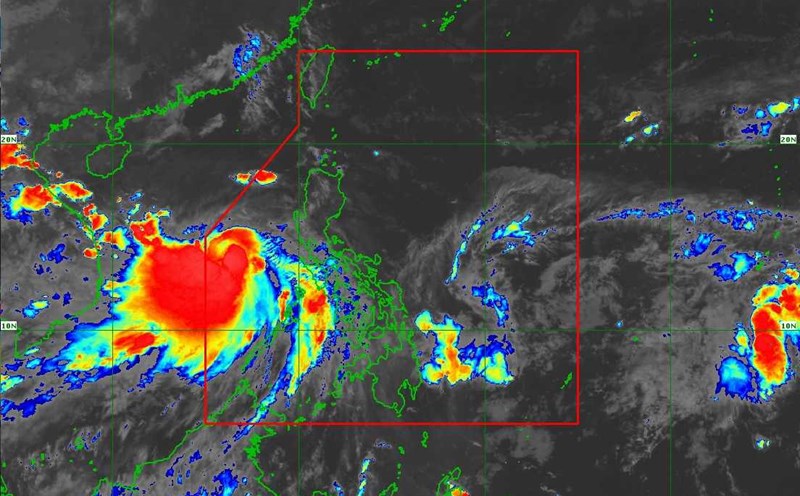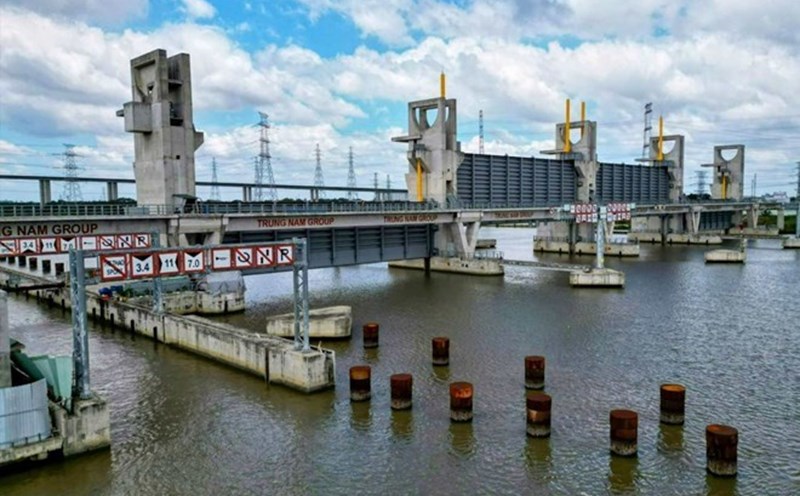More than 240,000 officers, soldiers and 4,000 vehicles on duty are ready
On September 27, Deputy Prime Minister Tran Hong Ha - Deputy Head of the National Civil Defense Steering Committee - chaired a meeting to deploy response to storm No. 10 (storm Bualoi).
According to a quick report from the Ministry of Agriculture and Environment, storm No. 10 is in the central East Sea area with an intensity of level 11-12, gusting to level 15.
The storm continues to move very quickly compared to the original forecast (about 35-40 km/h, nearly double the average speed), strong storm intensity, wide range of influence, can cause the combined impact of many types of natural disasters such as strong winds, heavy rain, floods, flash floods, landslides and coastal flooding.
General Nguyen Tan Cuong - Chief of the General Staff, Deputy Minister of National Defense - said that, implementing the telegram of the Prime Minister and the National Steering Committee, the Ministry of National Defense has issued instructions to the entire army, especially Military Region 3, Military Region 4, Military Region 5 - areas directly affected. The ready-to- serve force currently has 240,580 officers and soldiers along with more than 4,000 vehicles.
The Ministry of National Defense will arrange forces to be present in key areas, beware of situations of isolation, isolation, and disconnection, and coordinate with localities to survey risk areas, and be ready to mobilize forces from the central government or on-site as required.
According to General Nguyen Tan Cuong, the forecasting work must combine science and experience, in which it is necessary to pay attention to the impact of the circulation after the storm to make decisions on flood discharge in reservoirs, evacuate people promptly and at the right time, avoiding passive situations.

5:00 p.m. on September 27, all activities at sea were stopped
Concluding the meeting, Deputy Prime Minister Tran Hong Ha emphasized that unlike storm No. 9, storm No. 10 after passing through the Philippines did not weaken but continued to increase in intensity, and was capable of going straight to our mainland at a very fast speed of 35-40 km/h. The storm's circulation extends along the coast, affecting the entire North and Central regions.
Affirming the guiding spirit of early prevention and absolute proactiveness, the Deputy Prime Minister requested localities to strictly implement the following timelines: Before 12 noon on September 27, they must absolutely control all ships at sea, and stop all activities at sea by 5:00 p.m. on September 27, "absolutely no delays".
Regarding the evacuation of people, the Deputy Prime Minister requested the Ministry of Agriculture and Environment to coordinate with localities to accurately identify areas with strong winds, key coastal areas, vulnerable dykes, combined with high tides and rising sea levels to make decisions to evacuate people soon and safely.
" Localities must isolate risk zones, have scenarios for connecting information, traffic, rescue, mobilizing machinery, and specific forces. The military regions coordinate with localities to inspect rivers, streams, and small lakes at risk of landslides and flash floods to have a plan for handling in advance. "The mobilization program and plan must be specific and the linkages must be clear," said the Deputy Prime Minister.
Telecommunications, military, Viettel, VNPT enterprises must ensure smooth communication, even in cases of widespread power outages.
"Immediately after this meeting, the comrades urgently deployed specific tasks. Responsibility must be linked to each level, each sector, each specific individual" - the Deputy Prime Minister pointed out and suggested "fewer meetings, many locations", grasping the situation, having a ready scenario for implementation as soon as needed.











